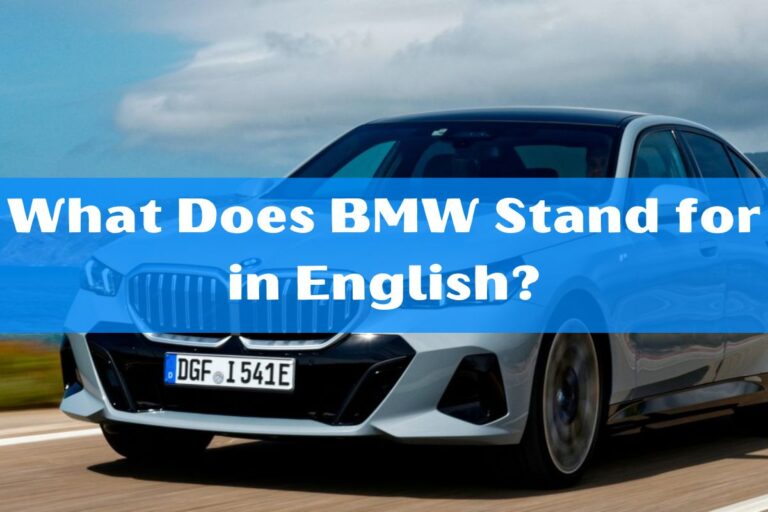BMW X7 vs Audi Q7: An In-Depth Comparison of Luxury SUVs
Are you in the market for a large, luxurious SUV that offers premium amenities and a spacious interior? The BMW X7 and Audi Q7 are two highly regarded options in this segment. In this comprehensive comparison, we’ll examine the key differences between these two flagship SUVs, including their design, interior space, performance, safety features, and pricing.
The BMW X7 is the brand’s first-ever full-size, three-row SUV, designed to provide a blend of luxury, performance, and practicality. On the other hand, the Audi Q7 has been a staple in the brand’s lineup for over a decade, offering a well-rounded combination of comfort, technology, and driving dynamics.
So, which of these luxury SUVs should you choose? This article will dive deep into the details to help you make an informed decision. We’ll cover everything from exterior styling and interior opulence to engine performance and advanced safety technologies.
Exterior Design and Dimensions
When it comes to exterior design, the BMW X7 and Audi Q7 take distinct approaches. The X7 boasts a bold and imposing presence, with its massive kidney grille, muscular lines, and squared-off proportions. It’s a design that commands attention and exudes a sense of power and authority.
In contrast, the Audi Q7 opts for a more understated and sleek aesthetic. Its clean lines, seamless surfaces, and sharp creases give it a sophisticated and contemporary look. While not as attention-grabbing as the X7, the Q7’s design is undoubtedly elegant and timeless.
In terms of size, the BMW X7 is the larger of the two. It measures 203.3 inches in length, 78.7 inches in width, and 71.1 inches in height, making it a true behemoth on the road. The Audi Q7, while still a sizable SUV, is slightly more compact at 199.6 inches long, 77.5 inches wide, and 68.5 inches tall.
Both SUVs offer a range of wheel options, with the X7 available with 20-inch to 22-inch wheels, and the Q7 offering 18-inch to 21-inch wheels. Larger wheels can enhance the vehicles’ aesthetic appeal but may come at the cost of ride comfort.
Interior Space and Luxury
One of the primary reasons for choosing a full-size SUV is the interior space it provides, and both the BMW X7 and Audi Q7 excel in this regard. Both vehicles can comfortably accommodate up to seven passengers across three rows of seating.
However, the X7 offers slightly more generous dimensions, with 40.8 inches of second-row legroom and 33.3 inches of third-row legroom. The Q7 provides 38.8 inches of second-row legroom and 29.2 inches of third-row legroom, which may feel a bit tighter for taller passengers.
When it comes to cargo space, the X7 again takes the lead. With all seats in place, it offers 12.8 cubic feet of cargo room, expanding to 48.6 cubic feet with the third row folded and a maximum of 90.4 cubic feet with both rear rows folded. The Q7 offers 14.2 cubic feet behind the third row, 35.7 cubic feet with the third row folded, and a maximum of 69.6 cubic feet with both rear rows folded.
In terms of interior luxury, both SUVs offer a premium experience. The X7 features high-end materials like Nappa leather upholstery, wood trim, and metal accents, creating an opulent and refined cabin. The Q7 also boasts a well-appointed interior, with high-quality leather, aluminum accents, and a sleek, minimalist design.
Both SUVs are equipped with advanced infotainment systems, including large touchscreens, navigation, and a host of connectivity features. The X7 features BMW’s iDrive system with a 12.3-inch digital instrument cluster and a 12.3-inch central display, while the Q7 offers Audi’s MMI system with a 10.1-inch or 8.6-inch central display, depending on the trim level.
Performance and Driving Experience
When it comes to performance, both the BMW X7 and Audi Q7 offer a range of powerful engine options. The X7 is available with a turbocharged 3.0-liter inline-six engine producing 335 horsepower and 330 lb-ft of torque, or a twin-turbocharged 4.4-liter V8 that generates 523 horsepower and 553 lb-ft of torque.
The Audi Q7 comes standard with a turbocharged 2.0-liter four-cylinder engine that produces 248 horsepower and 273 lb-ft of torque. However, for those seeking more power, there’s an available turbocharged 3.0-liter V6 that delivers 335 horsepower and 369 lb-ft of torque.
In terms of acceleration, the X7 with the V8 engine is the clear winner, capable of sprinting from 0 to 60 mph in just 4.5 seconds. The Q7’s V6 engine, while potent, takes a more leisurely 5.7 seconds to reach 60 mph.
Both SUVs come standard with all-wheel-drive systems and eight-speed automatic transmissions, ensuring optimal traction and power delivery. However, the X7 offers an optional air suspension system that can adjust the ride height and firmness, providing a more comfortable and composed ride.
When it comes to handling, the Audi Q7 has a slight edge due to its lighter weight and more agile nature. It offers a more engaging and responsive driving experience, especially when equipped with the available adaptive air suspension. The X7, on the other hand, feels more planted and stable at higher speeds, but its sheer size can make it feel less nimble in tight corners.
In terms of fuel efficiency, the Q7 with the four-cylinder engine leads the way, achieving an EPA-estimated 19 mpg in the city and 23 mpg on the highway. The X7’s inline-six engine is rated at 19 mpg city and 24 mpg highway, while the V8 engine drops to 15 mpg city and 21 mpg highway.
Advanced Safety Technologies
Both the BMW X7 and Audi Q7 prioritize safety with a suite of advanced driver-assistance technologies. Standard safety features on the X7 include forward-collision warning, automatic emergency braking, blind-spot monitoring, lane-departure warning, and rear cross-traffic alert.
The Q7 also comes equipped with a robust safety package, including forward-collision warning, automatic emergency braking, lane-departure warning, and Audi’s Pre Sense system, which can help mitigate the effects of a collision.
Additionally, both SUVs offer optional advanced safety features like adaptive cruise control, night vision, and surround-view camera systems to enhance visibility and situational awareness.
In terms of crash test ratings, the Audi Q7 has an edge, earning a Top Safety Pick+ rating from the Insurance Institute for Highway Safety (IIHS) and a five-star overall safety rating from the National Highway Traffic Safety Administration (NHTSA). The BMW X7 has not yet been rated by the IIHS but received a five-star overall safety rating from the NHTSA.
Pricing and Value Proposition
When it comes to pricing, the Audi Q7 has a lower starting point, with a base MSRP of around $56,000. The BMW X7, on the other hand, starts at around $74,000 for the base model with the inline-six engine.
As you move up the trim levels and add optional packages, the prices for both SUVs can quickly escalate. A fully loaded Q7 Prestige trim with the V6 engine and additional packages can approach $80,000, while a top-of-the-line X7 M50i with the V8 engine and all available options can surpass $120,000.
It’s important to consider the long-term costs of ownership as well, including fuel costs, maintenance, and insurance. The Audi Q7, with its more fuel-efficient engine options and potentially lower insurance rates, may have an advantage in this regard.
Ultimately, the decision between the **BMW X7** and Audi Q7 will depend on your priorities and budget. If you’re looking for maximum interior space, a more commanding road presence, and the option for a powerful V8 engine, the X7 may be the better choice. However, if you prioritize a more affordable entry-level pricing, better fuel efficiency, and a slightly more engaging driving experience, the Q7 could be the way to go.
It’s worth noting that both the BMW X7 and Audi Q7 are available with various trim levels and option packages, allowing you to tailor the vehicle to your specific needs and preferences. It’s advisable to carefully consider the features and equipment you desire and factor in the associated costs to determine the best value proposition for your circumstances.
The Verdict – Which Luxury SUV to Choose?
After considering all aspects of these two luxury SUVs, it’s clear that both the BMW X7 and Audi Q7 offer compelling features and capabilities. The X7 stands out with its bold and imposing design, larger interior dimensions, and the availability of a potent V8 engine option. On the other hand, the Q7 impresses with its sleek styling, slightly better fuel efficiency, and more agile handling characteristics.
For families or individuals who prioritize maximum interior space and a more commanding road presence, the BMW X7 may be the better choice. Its larger dimensions and optional third-row seating make it an excellent option for those who frequently transport multiple passengers or need ample cargo space.
However, if you value a more engaging driving experience, better fuel efficiency, and a lower entry-level pricing point, the Audi Q7 could be the more suitable option. Its well-appointed interior, advanced safety features, and available V6 engine provide a well-rounded package that balances performance and luxury.
Ultimately, the decision between these two luxury SUVs will come down to your personal preferences, lifestyle needs, and budget considerations. It’s recommended to test drive both vehicles to get a firsthand experience and determine which one best aligns with your priorities.





